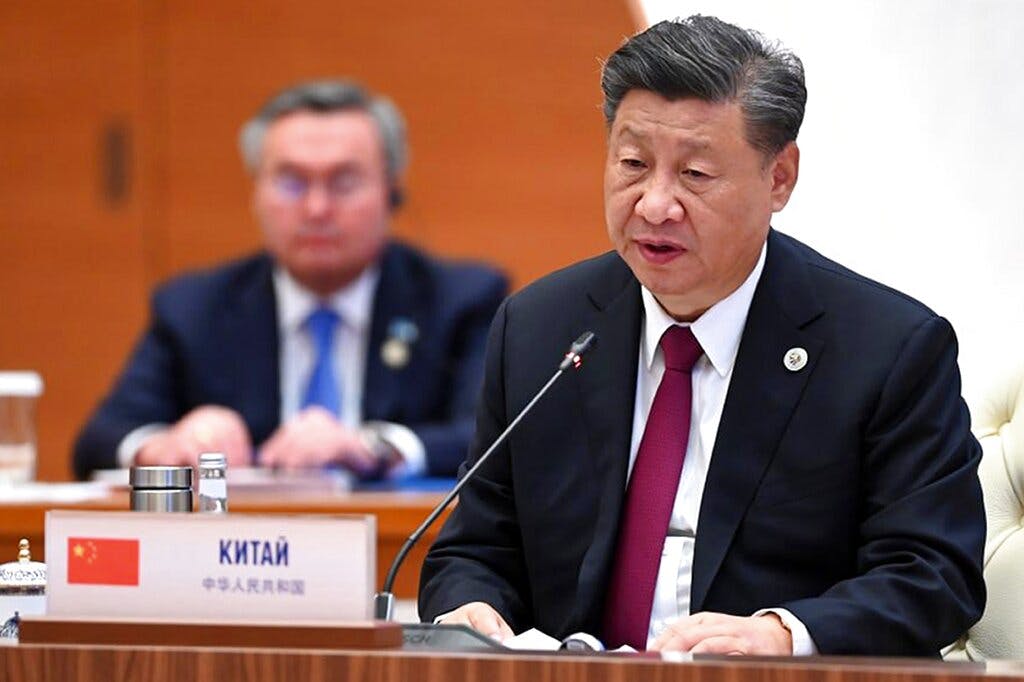Researchers Trained in U.S., After Returning to China, Are Driving Military Breakthroughs for Beijing
A new report puts at 162 the number who did research at just one major American laboratory and returned to China to help its military modernize.

Some 162 researchers conducting sensitive military research for the U.S. at Los Alamos have returned to China, where they have contributed to major breakthroughs in the PLA’s military modernization, a new report discloses.
The report, issued last week by a data software company called Strider Technologies, shows that the breakthroughs include scientific advancements in “hypersonics, deep-earth penetrating warheads, unmanned autonomous vehicles, jet engines, and submarine noise reduction.” These advancements have important military value and in some instances, such as hypersonics, contributed to China developing more advanced weaponry than America.
Strider Technologies, according to a news site called Venture Beat, which covers the tech world, is “designed to help companies, governments and research institutions protect intellectual property (IP), talent and supply chains from nation-state threats.” Its report demonstrates how China has methodically recruited academics and researchers, largely through foreign talent programs, to bring sensitive secrets and know-how gained from working on U.S. military projects back to China in order to power military modernization for the PLA.
The report also argues that the 162 researchers found from Los Alamos only scratch the surface of the Chinese effort. The Chinese Communist Party, according to the report, currently operates nearly 500 foreign talent programs, members of which are contractually obligated to return to China as well as recruit other researchers to their programs.
“The PRC’s success among former Los Alamos affiliates, along with support for China’s talent programs from Chinese Communist Party (CCP) General Secretary Xi Jinping and other top CCP leaders, suggest that similar recruitment efforts may be widespread among U.S. government–funded laboratories, academic research institutions, and major centers of innovation.”
“The objective in conducting this study,” Strider says, “is to contextualize and document the ongoing efforts of the PRC government to send promising scientists to U.S. national laboratories for training while also recruiting leading scientists back to the PRC to advance its own military programs.”
Strider goes on to say that former Los Alamos scientists “have made, and continue to make, considerable contributions to the PRC hypersonic, missile, and submarine programs that present an array of security risks for the United States and the entire free world.
“Better protection is needed for the institutions, research programs, and scientists advancing innovation in this era of strategic competition without harming open scientific collaboration.”
The individuals highlighted in the report include Chen Shiyi, who, upon returning to China, made “major contributions to China’s hypersonics and aerodynamics programs,” including “the PRC’s hypersonic glide vehicle,” directly “contributing to the PRC passing the United States in hypersonic R&D.”
Zhao Yusheng, who, according to Strider, is a recipient of “$19.8 million in U.S. government funding, including for sensitive research on deep-earth penetrating warheads,” is another. Mr. Zhao also led a Department of Energy and Department of Defense joint project called “Nanostructured Superhard Noses for Deep-Penetrating Warheads” and was granted a DOE “Q Clearance,” which gave him access to classified material.
A third is a postdoctoral researcher, He Duanwei, who, after working with Mr. Zhao on “super-hard materials in warhead penetrators [that would] significantly enhance technological advantages of U.S. weaponry” for the Department of the Navy, returned to China and filed a national defense patent on a similar technology for an “ultra-thick penetrating warhead.” He is now affiliated with “the PRC’s premier nuclear weapons R&D and production facility.”
Another is Shan Xiaowen, who, after conducting research at the United States Air Force Research Laboratory, returned to China and became head of the R&D Center focused on unmanned aerial vehicle technologies, also known as drones.
The list includes others, such as He Guowei, who left Los Alamos and became “a key figure,” according to the report, “in the PRC’s efforts to deploy quieter submarines that are better able to evade detection — a hallmark of the world’s most modern navies.”
Another “led research for both the U.S. military and the PLA while concurrently employed as a professor at a U.S. university and as a Thousand Talents selectee at Nanjing University of Science and Technology.”
At least 13 other scientists formerly at Los Alamos “either work for or have participated in research sponsored by defense organizations such as the Central Military Commission (CMC) and SASTIND,” Strider says.
Seven are tied to “the primary R&D and production facility for the PRC’s nuclear weapons program,” and four work for the laboratory responsible for “producing multispectral camouflage materials for an unnamed stealth fighter, developing advanced sensors for aircraft engines, and providing infrared detectors for PLA aircraft,” among other accomplishments.
Given the military value provided to the PRC by these individuals alone, and the indications that these anecdotal cases only scratch the surface, better protection for U.S. research is indeed needed.

